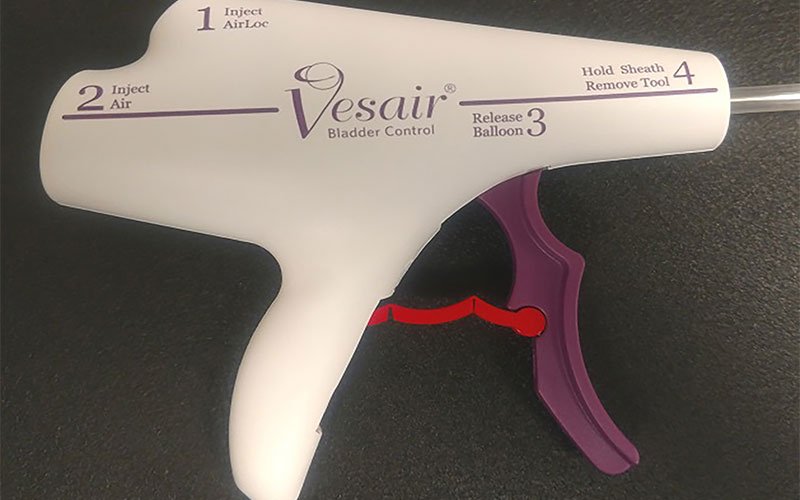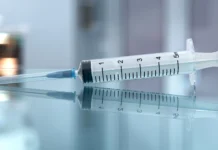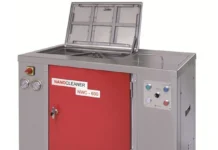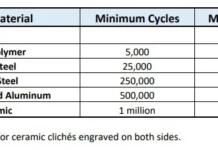by Keith Ekenseair, president and CEO, Pad Printing Technology
Pad printing in the medical device industry has similar complications with pad printing in other industries. However, it has some unique challenges, as well. This article will focus primarily on the unique challenges of contract pad printing providers. Before diving into the pad printing complications, it is useful to first take a brief look at the industry.
Medical device market

Medical technology represents an international industry in which the US is the largest medical device market, estimated at $156 billion and expected to grow over $200 billion by 2023.
The medical device industry consists of instruments, apparatuses and machines that are used in the prevention, diagnosis or treatment of illness or disease, or measuring, restoring, correcting or modifying functions of the body for health purposes. It is a highly competitive industry and typically requires developers to make multiyear investments into research and development to fulfill their purpose of making life-changing innovations. Given the healthy American economy with solid corporate growth, low employment and positive GDP growth, innovation is thriving in the US.
Pad printing for medical devices requires pad printers to be specialists to ensure markings are consistent and repeatability is achieved. Pad printing providers print on a wide variety of medical devices including catheters, tubes, shafts, clips, syringes, handles, adapters, housings and connectors.
When pad printing services are performed, they are typically part of a larger manufacturing process. Therefore, the pad printing providers must work within the limitations established by the original equipment manufacturers (OEMs) with high quality and precise tolerances. Benefits of pad printing include:
- Printing on complicated substrates
- Printing on irregular shapes and surfaces
- Greater versatility
- Processes proven for decades
- Popularity across a variety of industries
- Product topography
Pad printing is often cost-effective over other printing methods, including digital, particularly with high volume, limited colors and small parts that require microscopic printing while maintaining high quality and tolerances.
As devices become more complex, rapid innovation in the additive manufacturing and 3D printing technologies can now offer highly functional and durable components that are production-ready. This has increased innovation in the medical industry, resulting in new products, more affordability and an ideal method for low-volume niche applications and on-demand manufacturing. Pad printing on complex materials has evolved into more of an art than a science.
The medical industry is difficult to enter if a product or process already exists. Changes in providers, materials, inks or processes can result in devices that are required to be requalified with the Food and Drug Administration (FDA), which can consume a lot of effort.
Variables that create problems are extensive and include common issues such as ink cup maintenance and ink leakage, clichés quality, poor image quality, pad quality and ink adhesion. Adhesion is the number one challenge in the pad printing industry. Permanent ink adhesion is necessary, as complicated substates are often used to which very little will adhere. The solutions often require the pad printer to have adequate knowledge of proper ink selection, surface tension, and energy and pretreatment solutions. Thus, selection of the proper ink for maximum adhesion, post treatment, curing and print durability testing are critical processes for pad printing in the medical device industry.
Using proper ink and additives affects the manipulation of solvent evaporation and pad printing efficiency. Issues can include too much or too little thinner – as thinners have different evaporation rates – and hardeners. Contamination from residual oils from upstream processes, mold-release oils and even perspiration from human hands can act as a barrier to efficient ink adhesion. Often, cleaning parts prior to applying the ink is required. To a great degree, ink adhesion depends on the surface energy of the substrate, which must be greater than the surface tension of the ink. Polyolefins, such as polypropylene and polyethylene, are typically below the minimum and need to be pretreated to raise the surface energy. Use of plasma and flame pretreatment of the surface to promote ink adhesion, quality and efficiency is often required. Proper post-curing processes must be applied, which often require 72 hours or more for typical non-UV curing processes, UV LED curing of 24 hours or more, using air blowers to aid transfer efficiency and following ink manufacturers’ drying and curing recommendations.
Pad printing challenges
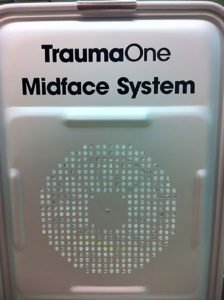
Some additional complexities for pad printing in the medical device industry include quality, safety, traceability and regulatory requirements.
Quality images and precise tolerances are required in the medical device industry. ISO certification is typically required, the latest of which is 9001:2015 and ISO 13485 for pad printing providers. Adequate systems of quality control are a must to have proper plans of manufacturing, process controls and CAPA, among other aspects. Additionally, quality control must ensure that markings are tested to guarantee high adhesion, print durability and the ability to withstand sterilization techniques. Attention to detail involves the optimum ink selection, surface preparation techniques, process controls and inspection programs. Quality is not only achieved through proper plans of manufacturing and testing, but also based upon years of experience.
Safety is the most important factor in terms of labeling medical products. Printing inks must be sterilization-resistant, must follow specified guidelines of sensitive products and ingredients must not migrate into the human body. Therefore, selection of suitable inks for medical products is critical. Medical graded inks that are widely used on catheters, tubing, syringes and other surgical instruments must comply with FDA standards for products coming in physical contact with the human body.
Safety often will require the use of facilities with cleanroom environments that are ISO certified. Cleanrooms allow production to take place in a controlled environment to ensure that medical device manufacturing cleanliness standards are achieved, and quality is consistently monitored. Production areas are required to have proper airflow for ventilation, and operators must be gowned in cleanroom attire.
Contamination is another important safety concern. For example, suppliers must maintain processes to prevent certain materials from coming in contact with the device. Contact material lists, along with safety data sheets for all contact materials, are often required by the OEMs. A Restricted Substance List and Substances of Very High Concern are available on the European Chemicals Agency website.
Traceability is a critical aspect to the medical device industry. This may require the use of unique device identification and labeling. Full traceability is required for all aspects of the medical production process. Process control programs for devices are required to identify all aspects of the manufacturing process, including the specific ink and additives used in the pad printing process. In the event of product recalls, this information is most critical to identify the source of the contamination or other concern.
Regulations for medical pad printing
As mentioned previously, a contract manufacturer must maintain a system of quality control that meets or exceeds the standards set out by ISO to ensure the quality, safety and efficiency of products, services and systems. These standards apply to any organization, regardless of its type or size, or the products and services it provides. ISO 13485 represents the requirements for a comprehensive quality management system for the design and manufacture of medical devices.
In the medical device industry, one must understand the FDA regulations impacting medical device manufacturers. Medical devices must go through complex compliance and regulatory procedures to protect the effectiveness of the medical device and the humans affected by them.
And if the FDA wasn’t enough, the European Union has established a new Medical Device Regulatory system effective May 2020. Affected companies should be working toward compliance, since this regulation may require medical devices currently on the market to go through a mandatory recertification process. This regulation has created concerns in the medical device industry.
Even with the challenges of the medical device industry, strategic and smart manufacturers believe the growth opportunities of this market are very appealing.
Keith Ekenseair serves as CEO of Pad Printing Technology, located in Bradenton, Florida. Pad Printing Technology is a specialized contract manufacturer that provides pad printing and laser marking for the medical, automotive, aerospace, commercial molding and industrial industries. For more information, visit www.pad-printing.com.

